Bond topology of chain, ribbon and tube silicates. Part I. Graph-theory generation of infinite one-dimensional arrangements of (TO4)n- tetrahedra
- PMID: 35502713
- PMCID: PMC9062827
- DOI: 10.1107/S2053273322001747
Bond topology of chain, ribbon and tube silicates. Part I. Graph-theory generation of infinite one-dimensional arrangements of (TO4)n- tetrahedra
Abstract
Chain, ribbon and tube silicates are based on one-dimensional polymerizations of (TO4)n- tetrahedra, where T = Si4+ plus P5+, V5+, As5+, Al3+, Fe3+ and B3+. Such polymerizations may be represented by infinite graphs (designated chain graphs) in which vertices represent tetrahedra and edges represent linkages between tetrahedra. The valence-sum rule of bond-valence theory limits the maximum degree of any vertex to 4 and the number of edges linking two vertices to 1 (corner-sharing tetrahedra). The unit cell (or repeat unit) of the chain graph generates the chain graph through action of translational symmetry operators. The (infinite) chain graph is converted into a finite graph by wrapping edges that exit the unit cell such that they link to vertices within the unit cell that are translationally equivalent to the vertices to which they link in the chain graph, and the wrapped graph preserves all topological information of the chain graph. A symbolic algebra is developed that represents the degree of each vertex in the wrapped graph. The wrapped graph is represented by its adjacency matrix which is modified to indicate the direction of wrapped edges, up (+c) or down (-c) along the direction of polymerization. The symbolic algebra is used to generate all possible vertex connectivities for graphs with ≤8 vertices. This method of representing chain graphs by finite matrices may now be inverted to generate all non-isomorphic chain graphs with ≤8 vertices for all possible vertex connectivities. MatLabR2019b code is provided for computationally intensive steps of this method and ∼3000 finite graphs (and associated adjacency matrices) and ∼1500 chain graphs are generated.
Keywords: adjacency matrix; bond topology; chain graph; edge set; graph generation; isomorphism; silicates; tetrahedra; translational symmetry; vertex set.
open access.
Figures


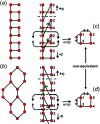

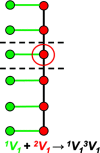






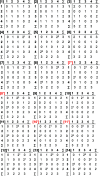






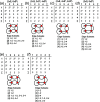

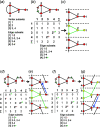
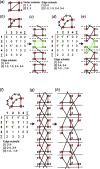


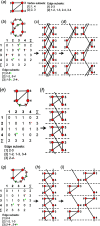
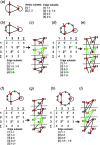





References
-
- Blatov, V. A., Shevchenko, A. P. & Proserpio, D. M. (2014). Cryst. Growth Des. 14, 3576–3586.
-
- Brown, I. D. (2016). The Chemical Bond in Inorganic Chemistry, 2nd ed. Oxford University Press.
-
- Chung, S. J., Hahn, Th. & Klee, W. E. (1984). Acta Cryst. A40, 42–50.
-
- Day, M. C. & Hawthorne, F. C. (2020). Miner. Mag. 84, 165–244.
-
- Delgado-Friedrichs, O. & O’Keeffe, M. (2003). Acta Cryst. A59, 351–360. - PubMed
LinkOut - more resources
Full Text Sources
Research Materials
Miscellaneous

